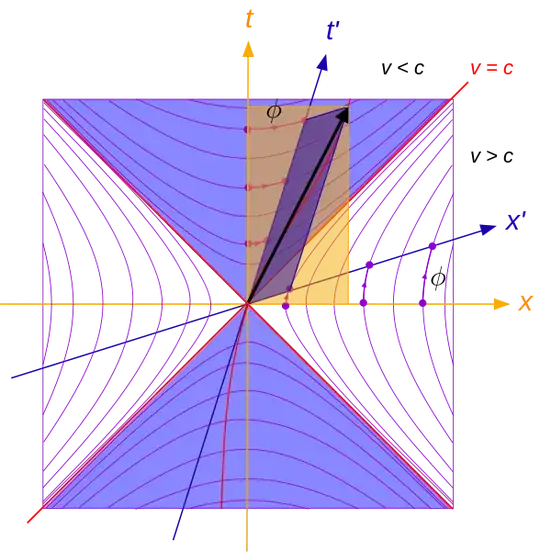Suppose we have two events $(x_1,y_1,z_1,t_1)$ and $(x_2,y_2,z_2,t_2)$. Then we can define
$$\Delta s^2 = -(c\Delta t)^2 + \Delta x^2 + \Delta y^2 + \Delta z^2,$$
which is called the spacetime interval. The first event occurs at the point with coordinates $(x_1,y_1,z_1)$ and the second at the point with coordinates $(x_2,y_2,z_2)$ which implies that the quantity
$$r^2 = \Delta x^2+\Delta y^2+\Delta z^2$$
is the square of the separation between the points where the events occur. In that case the spacetime interval becomes $\Delta s^2 = r^2 - c^2\Delta t^2$. The first event occurs at time $t_1$ and the second at time $t_2$ so that $c\Delta t$ is the distance light travels on that interval of time.
In that case, $\Delta s^2$ seems to be comparing the distance light travels between the occurrence of the events with their spatial separation. We now have the following definitions:
If $\Delta s^2 <0$, then $r^2 < c^2\Delta t^2$ and the spatial separation is less than the distance light travels and the interval is called timelike.
If $\Delta s^2 = 0$, then $r^2 = c^2\Delta t^2$ and the spatial separation is equal to the distance light travels and the interval is called lightlike.
If $\Delta s^2 >0$, then $r^2 > c^2\Delta t^2$ and the spatial separation is greater than the distance light travels and the interval is called spacelike.
These are just mathematical definitions. What, however, is the physical intuition behind them? What does an interval being timelike, lightlike or spacelike mean?
